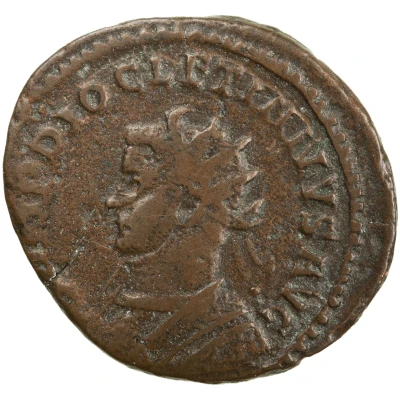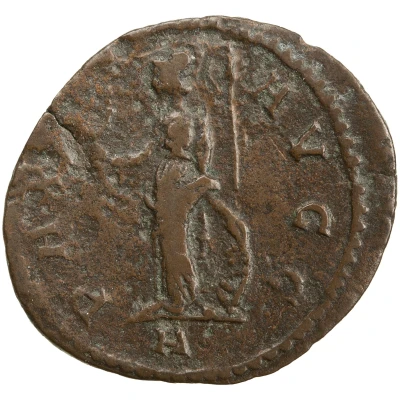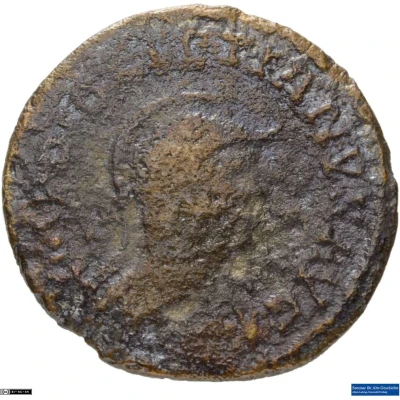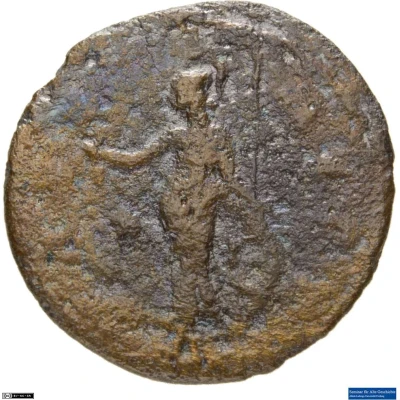


© American Numismatic Society (ANS)
Antoninianus - Diocletianus PAXX AVGG; Minerva
| Silver | 3.3 g | 21.5 mm |
| Issuer | Rome › Roman Empire (27 BC - 395 AD) |
|---|---|
| Emperor | Diocletian (Gaius Aurelius Valerius Diocletianus) (284-305) Maximian Herculius (Marcus Aurelius Valerius Maximianus) (286-305) |
| Type | Standard circulation coin |
| Years | 292-288 |
| Value | Antoninianus (1) |
| Currency | Antoninianus, Reform of Caracalla (AD 215 – 301) |
| Composition | Silver |
| Weight | 3.3 g |
| Diameter | 21.5 mm |
| Shape | Round (irregular) |
| Technique | Hammered |
| Demonetized | Yes |
| Updated | 2024-10-05 |
| Numista | N#305690 |
|---|---|
| Rarity index | 100% |
Reverse
Minerva, helmeted, draped, standing left, holding olive-branch in right hand and spear in left hand, leaning on shield.
Script: Latin
Lettering:
PAXX AVGG
-/-//A
Translation:
Pax Duorum Augustorum.
Peace of the two emperors (Augusti).
Comment
Mass varies: 3.02–3.57 g;Diameter varies: 21–22 mm;
Example of this type:
American Numismatic Society (ANS)
Source:
Online Coins of the Roman Empire (OCRE)
Interesting fact
The Antoninianus - Diocletianus coin was part of a series of coins issued during the reign of Emperor Diocletian, who ruled the Roman Empire from 284 to 305 AD. This coin was minted in Rome and features an image of the goddess Minerva on the reverse side, which was a common motif on Roman coins during this period. The coin's design and minting process were overseen by the Roman imperial administration, which was responsible for producing currency for the empire. Despite being made of silver, the coin weighs only 3.3 grams, which is relatively light compared to other coins of similar composition. This suggests that the coin may have been produced using a different alloy or minting technique, which could have been a cost-saving measure or a way to increase the coin's durability. Overall, the Antoninianus - Diocletianus coin is an interesting example of Roman numismatics and offers a glimpse into the economic and cultural practices of the Roman Empire during the late 3rd century AD.

